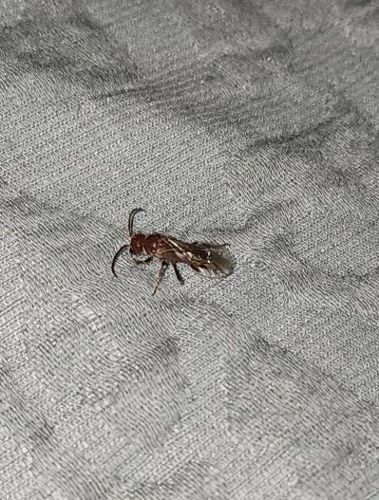Ant Wasp (likely Male Thynnine Wasp)
Scientific Name: Hymenoptera: Thynnidae (likely a male)
Order & Family: Order: Hymenoptera, Family: Thynnidae
Size: Most thynnid wasps range from 5mm to 30mm in length, depending on the species.

Natural Habitat
Thynnid wasps are typically found in warmer climates, often in dry, sandy areas, forests, grasslands, and agricultural fields. Males are winged and can be seen flying around searching for females, which are wingless.
Diet & Feeding
Adult male thynnid wasps feed on nectar and other sugary plant secretions. The larvae are external parasites of beetle larvae, particularly scarab beetle larvae, but also occasionally weevils or moths.
Behavior Patterns
The most distinguishing behavior is the sexual dimorphism; males are winged and free-flying, while females are wingless and resemble ants. Males carry the flightless females during mating. Females lay their eggs on host larvae in the soil. The emerging thynnid wasp larva then feeds on the host. Males are seen flying low over vegetation, seeking out females, often attracted to various flowers.
Risks & Benefits
Generally, thynnid wasps are not considered a risk to humans; males are usually harmless, and females, while capable of stinging, are not aggressive unless provoked. Their primary benefit is ecological, as the larvae are parasitoids of various soil-dwelling insect larvae, including agricultural pests like scarab beetle grubs, contributing to natural pest control.
Identified on: 9/19/2025